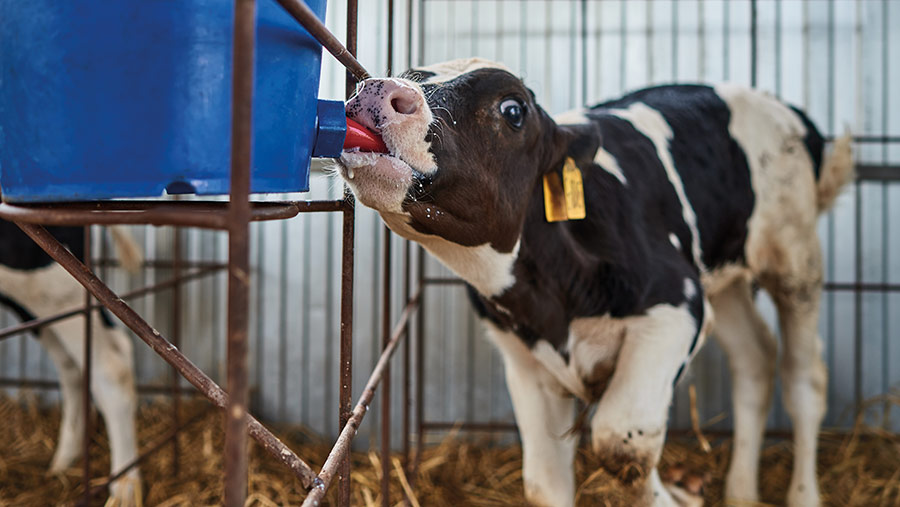Calf slaughter increases as costs fail to stack up
 © Alexander Lupin/Adobe Stock
© Alexander Lupin/Adobe Stock More calves are being sent for processing as businesses facing high milk powder costs cut their losses, while dairy bulls make £15 a head less than a year ago.
Numbers of calves killed under 12 months of age increased 25% year-on-year to the start of October and stood at 8,000-head in September, up 1,300-head on the year.
Rearing costs of £20-£25 a week have proved prohibitive for some units, with farms now costing the price of getting a calf to an eight-week weaning at £170-£200 or more.
Coarse calf mix has rocketed from £467/t to £572/t. Meanwhile, bull calf prices are 32-38% back on the year. One large supplier said its milk powder prices had lifted from £2,100/t to £2,300/t since March.
See also: Costs hold back calf prices 30% on the year
Slaughter numbers
A trade source said some autumn calf buyers had not bought this season, waiting for at least January to purchase stronger, weaned calves.
Little impact has been felt at live markets, with more sold during the first nine months of 2022 (34,555 versus 31,386 in 2021), although some have reported increased numbers being bought for processing.
Current slaughter numbers are still well short of the 13,900 calves that went for processing in September 2019. There were close to 100,000 calves killed in the first nine months of that year, compared with 57,900 so far this year.
This suggests the Great Britain Calf Strategy 2020-2023, a cross-sector initiative to maximise the value of the country’s calf crop and minimise euthanasia and processing of calves, is having a positive effect.
Solution in genetics
John Royle, chief livestock adviser for the NFU, said high milk powder costs meant “second-quality” calves were failing to stack up economically.
Mr Royle said smaller-framed dairy calves were delivering poor slaughter weights and conformation and not meeting the needs of the beef industry.
“While the dairy industry is adopting sexed semen and putting more cows to beef sires, reports are that some dairy-beef crosses still do not meet the needs of the beef industry, especially when these come from smaller-stature dairy cows,” said Mr Royle.
He said calves supplied to beef farmers needed to reflect the cost of rearing and the potential of the calf when finished.
Farm input inflation was making it more important than ever for calves to genetically deliver growth and feed efficiency potential and produce a valuable – ideally R-grade – carcass, he added.
The numbers
-32% Drop in Holstein-Friesian bull calf values on the year, to £31.45 for calves up to three weeks old (Defra)
-£87 Loss in average continental-cross bull calf value on the year – now at £152.38 (Defra)
£111 Average price for British Blue-cross rearing calves at Market Drayton on 27 October. They topped at £265 (Barbers)
